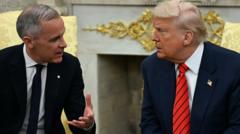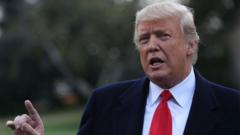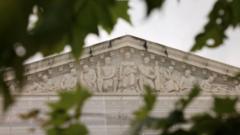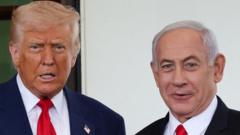This ruling significantly alters the balance of power between the judicial and executive branches, enabling Trump's policies to proceed despite prior judicial challenges.
**Supreme Court Limits Judicial Power, Boosts Trump on Citizenship Policy**

**Supreme Court Limits Judicial Power, Boosts Trump on Citizenship Policy**
The recent Supreme Court ruling allows President Trump's executive order on birthright citizenship to move forward.
In a significant decision, the U.S. Supreme Court has unanimously limited the ability of lower courts to block presidential orders, marking a major victory for President Donald Trump in his pursuit to alter birthright citizenship. The court's 6-3 decision centered on Trump's controversial executive order aimed at eliminating automatic citizenship for individuals born in the United States to non-citizens and undocumented migrants.
The ruling, issued on Friday, specifically addresses the broader implications of executive power, rather than directly assessing the validity of Trump's citizenship order. This judicial shift is expected to have profound consequences for how executive actions are scrutinized moving forward, with experts predicting a wave of legal challenges to the ruling itself.
Trump, addressing the media at an unexpected press conference, hailed the ruling as a "monumental victory" for constitutional governance, stating that "radical left judges" were undermining his authority. The administration's stance has been that nationwide injunctions pose a serious threat to democratic processes.
Following a series of lawsuits filed by 22 states and immigrant rights organizations aiming to block the executive order, the Justice Department took the case to the Supreme Court, arguing against the constitutional validity of those injunctions. The high court ultimately sided with the administration, ruling that federal courts would have to implement a more constrained approach regarding universal injunctions against presidential actions.
While the ruling permits courts to halt presidential actions deemed unlawful, experts argue that the timing of such interventions will be postponed, giving executives more latitude to implement their policies. Attorney General Pam Bondi emphasized that this ruling effectively limits judicial overreach and affirms the executive authority.
Justice Amy Coney Barrett, who wrote the majority opinion, asserted that federal courts should operate within the frameworks established by Congress, while also emphasizing that overstepping judicial responsibilities should not occur when the Executive Branch acts unlawfully. Conversely, dissenting Justice Sonya Sotomayor warned that this ruling compromises constitutional checks and invites executive overreach.
As the implications of this ruling begin to unfold, further legal challenges are anticipated, raising questions about the evolving dynamics between the judiciary and the presidency.




















